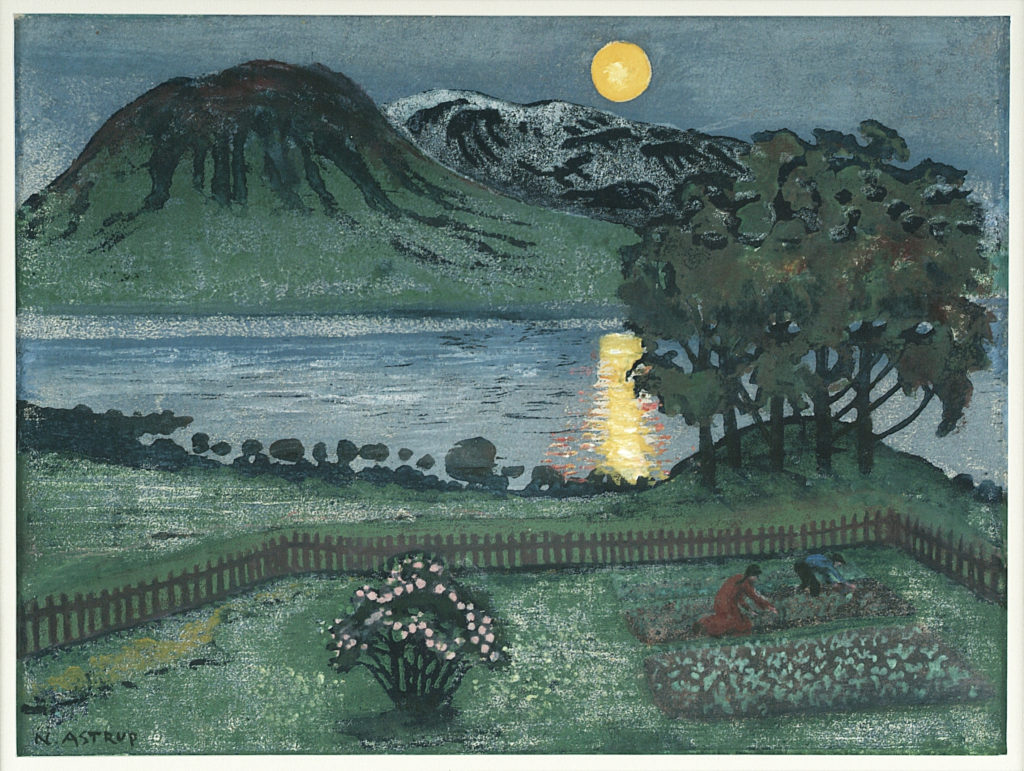May Moon

In May Moon Nikolai Astrup (1880-1928) depicts the interplay between man and nature, where humans are part of the cycle of nature and reap the produce of the soil.
Depicted here is the artist’s childhood home on a late spring night, with the Vicarage, Jølstervannet and the characteristic mountains in the background. The full moon is at its zenith in the sky and is reflected in the shimmering lake.
A man and a woman crawl on their knees in the field, working the earth; it is as though the two figures are bound to the earth, as though they are one with the soil they are cultivating. Working like this during the night was the result of an age-old superstition that predicted a better harvest if one planted and tended the garden while the magical full moon showed itself. It is this motif that Astrup devoted considerable attention to, both in paintings and woodcuts, and repeated in a number of different versions where he concentrated on the shifting light and atmosphere.
Although Jølster farmers may have worked in their fields under a full moon in May, as Astrup shows us here, his representation of the motif is not realistic. In his distinctive way he transforms the observed reality into a universal experience; the farmers’ daily toil, their simple frugal everyday lives are transformed into hallowed acts.
OWG